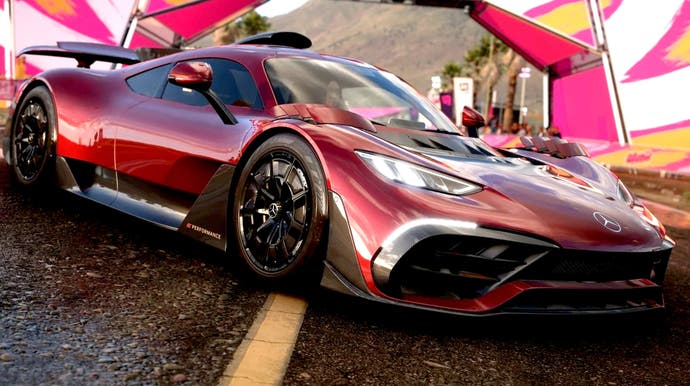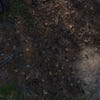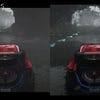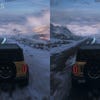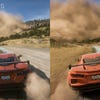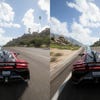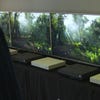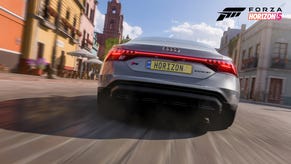The technology of Forza Horizon 5: an Xbox Series X masterpiece
Plus: a first look at cross-platform comparisons.
For nearly as long as video games have existed, the racing game has stood as a monument to state-of-the-art technology - an opportunity to dazzle audiences with vividly realized automobiles gliding across virtual highways. As this technology evolved so too did the representation of driving - more advanced physics enabled more realistic simulations while more powerful graphics architecture enabled increasingly vivid recreations of the world around you. As new consoles launched, new racing games would inevitably appear to demonstrate why you needed that new machine. From Project Gotham Racing to Forza Motorsport to Forza Horizon, Microsoft has understood this - and with Forza Horizon 5, Playground Games has delivered an exceptional system showcase.
The defining structure of Forza Horizon is the marriage of driving and open world exploration. Players are plunged into an expansive map packed full of races and events - participation in or simply reaching these events allows players to drive a wide range of powerful cars along the way. To make this work effectively, the game needs to render large open areas that are both visually striking yet completely legible while also retaining near-field detail capable of showcasing both the cars and the environment. Oh, and it needs to do all of this at 200 miles per hour.
Forza Horizon 5 does each of these things better than any prior entry in the series - the cars and nearby environments are more detailed than before while distant objects retain a suitably rich silhouette. This is, without a doubt, one of the most visually striking racing games we've played at Digital Foundry. It's at once an astonishing showcase of what the Xbox Series consoles are capable of delivering and yet, at the same time, it also runs well on Xbox One-class kit too (something we'll be looking at much more closely in a piece coming soon). It's the most ambitious cross-gen game we've looked at and a masterpiece of scalability.
But to get the basics out of the way, there are essentially six console versions of Forza Horizon 5. Xbox One renders at 1080p with 4x MSAA (with dynamic resolution scaling down to 810p on occasion), running with a convincing enough but clearly pared back visual feature set. Xbox One X? Native 4K with a 1600p DRS minimum - and again, with 4x MSAA - but an across-the-board increase in visual features. Both of these games run at 30fps with virtually no appreciable drops in performance. On the new machines, there's a performance mode and a quality mode. Series S runs quality mode at between 1440p and 1080p (an upgrade from the preview code we saw) with a performance alternative that's 1080p with DRS fallback to 810p. Series X? Fixed native 4K in quality mode with a 4K performance option that can scale back to 1600p. Again, 4x MSAA is standard across all Xbox Series consoles and it's worth stressing that DRS kicks in only occasionally.
There's much more to scalability beyond resolution and frame-rate. There are three (very) broad tiers of visual quality. Xbox One S is a convincing enough low-spec facsimile of the other versions - the new signature tech is in place, it's content complete, it looks good running at speed but clearly it's not the game at its best. Xbox One X doesn't just have more pixels, it's a far richer experience all around - it's close to Series X and Series S performance modes, just running at half frame-rate. Quality mode on Series consoles is a world apart in terms of detail, fidelity and integrity - level of detail is astonishing. Interestingly, 4x MSAA works for pristine representation of vehicles, but isn't really compatible with the organic scenery, producing shimmering artefacts where a temporal AA solution may have helped. And in that third quality tier, Series X goes further than Series S with additional technologies that plant this up there with a high-end PC experience.
As we learned at a recent visit to Playground Games though, as much as the game pushes visuals at the high end, Forza Horizon 5 is still beholden to a certain extent by its support for the older consoles - so while the accomplishments seen here are phenomenal, we know there is still room to grow. We've already seen that growth, to be fair. As research for this piece, I revisited 2014's Forza Horizon 2 for Xbox One - and as handsome as it was for its day, its three sequels running on the same hardware look worlds apart in terms of detail, effects and fidelity.



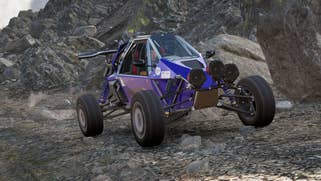





















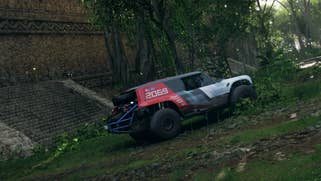










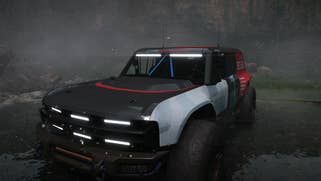


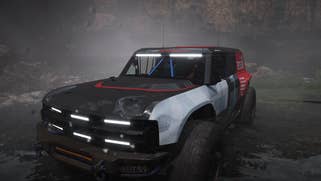
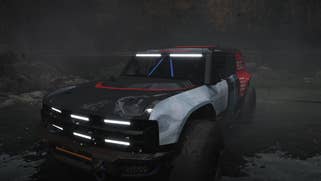

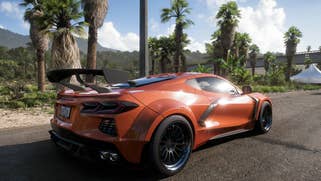
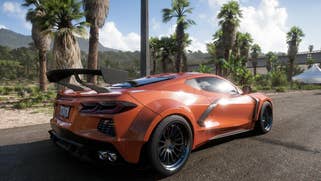
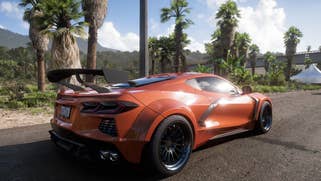
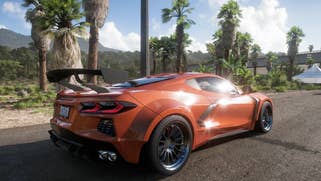
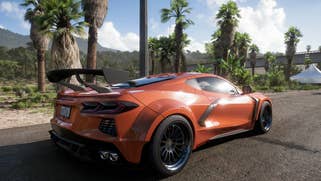
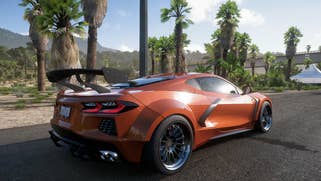
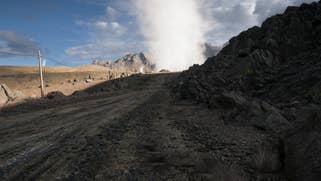
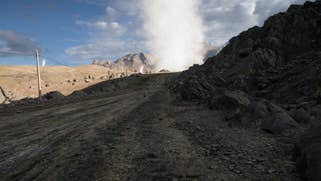

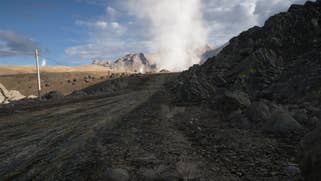
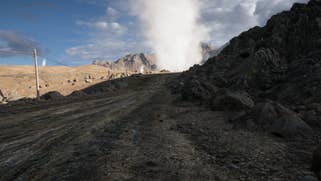
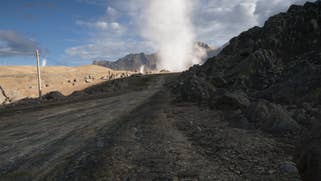
At the core of the game are the cars you drive. Forza Horizon 5 features a wide range of vehicles to choose from and despite the densely packed environment around you, the level of detail in the vehicles is impressive. There's also a huge selection to choose from: this is where the partnership between Turn 10 and Playground Games really works in its favour. Essentially, the cars created for the more simulation-focused Forza Motorsport can be utilised directly in Horizon.
Playground does have some control over car designs, however, and are free to modify aspects to fit their game. That ranges from exotic customisations to the ability to show convertible cars with the roof down. What's always been impressive about Horizon generally is that Playground Games has taken car designs with the fidelity for a closed-circuit racing game and integrated them into a full open world, a much larger game. When examining the vehicles, I started by looking at the models available exclusively in Forza Horizon 5 - many of the cars featured in this game were also present in Forza 7 and Horizon 4 but there are some new inclusions.
One of the new cars added to Horizon 5 is the gorgeous new Toyota Supra - this collaboration between Toyota and BMW has resulted in a beautiful take on the classic Supra design and it's well represented here. The finish on the paint with the clear coat is perfect and realistically scatters light across the surface. For this game, Playground also added bent normals - the key benefit to this tech stems from improvements to lighting and shading. When looking at areas around the bumper, for instance, you can see the benefit with improved shadowing in occluded areas. It's a new feature that improves fidelity and isn't available on the base Xbox One.
When viewing the car in Forza Vista or when using photo mode at specific locations, ray tracing is enabled on Series X and S consoles in quality mode - it would be nice to see this in game, of course, but at least it provides a nice visual benefit in these modes specifically with self-reflection - you can see the mirrors or the wheels reflecting accurately. You can also appreciate the detail that has gone into things such as the brake rotors or the texture of the tire itself. The body work is also sublime with detail right down to smoothly rounded parking sensors. Interiors are of good quality as well - comparable to Forza Motorsport 7 but with improved shading, I feel. Everything from the buttons on the steering wheel, the labels on the shifter to the buttons across the center stack. It looks remarkably good.
All of this holds true for the cars I've examined so they all look great but, even if you stop during normal play, the cars simply driving around the world are also surprisingly detailed. Now, of course, while racing, there is some LOD management happening but on Xbox Series X - especially in quality mode - it's virtually invisible. The point is that car rendering is superb and on-par with a more focused simulator, while the improvements to the engine help these vehicles shine brighter. The cars only account for part of the visual experience, of course. The environments are just as important. The strength of Forza Horizon as a series lies in its depiction of dramatic locales where players can drive anywhere. Mexico is one of the best choices we've seen thus far, and the technology supports it well.
The sense of scale is vast with a variation in height we've not seen before in this series, but to best appreciate the scale we need to start small. For Playground Games, getting the game to look beautiful isn't just about a convincing feel of motion at speeds of up to 200mph and beyond, but also in creating a convincing world simulation that holds up at walking speed - and with immense levels of detail. The road surface itself is as detailed as you would expect in a driving game but for the first time, the developers have integrated parallax occlusion maps into terrain surface with Series X quality mode. This allows for proper height and perspective on such surfaces increasing the sense of realism.
Another comparable technique is also used on building materials when using quality mode: cone step mapping. Stop the game, enter photo mode and take a trip around the environment - the smallest brick has convincing depth. When you go off-road, the level of detail is even more impressive. Actual geometry is combined with the terrain to further increase depth in certain scenes but it's the way in which the procedurally painted ground system works that blew me away. Forest floors are replete with individual pinecones, leaves, pine needles and branches scattered about. Screen-space shadows are used to accentuate small plants as well.
Essentially, what we have here is the results of Playground's 'recipe system', in which multiple texture layers are combined and then painted across the landscape. Series X, in quality mode, can have up to five layers combined to create a complex material. When painting the landscape, the properties of the results are considered as well - where grass is painted, for instance, the impact this has on the car physics is automatically considered. Basically, the combination of procedural generation and these recipes allow artists to quickly (but carefully) create highly realistic environments. Then there's the foliage system - the developers have greatly enhanced the way trees and plants look and react in this game. Firstly, there is a new light penetration system in place which impacts how light passes through leaves. The foliage bending system has also been enhanced so that different types of trees bend and sway correctly in the wind - and that wind system has been upgraded as well. It's a sight to behold when a storm rolls in, that's for sure. In fact, Forza Horizon 5 accurately maps weather systems across the entire game world.
Another key improvement in Horizon 5 lies in its reliance on more detailed environment meshes - most noticeably rock formations. This allows for a huge increase in the perception of scene detail with jagged and smooth rock formations alike defining areas of the terrain. Then there are the towns and cities scattered across the world - the average level of detail for buildings has been dramatically increased from earlier entries in the series, as has the density. There are now more objects and active elements present in these scenes which helps create an environment that feels detailed enough to support walking around on foot.
These are just some of the elements featured throughout the game and they're all used to create the various biomes you'll explore. From the tightly packed jungle environments to the massive scale of an active volcano, there's a lot to see. The main thing that helps sell this environment is the sense of visibility you get. In the prior game, there was always a feeling that hills basically limited your overall view of the area but there are so many more vistas in Horizon 5 allowing you to see far out into the distance. This alone helps create a more enjoyable world to explore. Part of the reason the last-gen versions still manage to convince is that far-off vista detail is retained, emphasising scale and scope even on the base Xbox One - but there's more to rendering this world than raw, geometric detail.
From weather effects to lighting and shadows, the atmosphere in Forza Horizon 5 is defined by a series of changes and improvements made to core rendering systems. First and foremost, one of the most significant improvements made to the renderer lies in the introduction of a new approach to global illumination - gone is the voxelised solution of the prior game, instead replaced with surfel GI - or surface-driven global illumination, accurately rendering indirect light bounce. Essentially, this GI data is generated based on the normal direction and albedo of surfaces and is placed using a procedural probe system. This probe system, however, has a set of rules that can be applied allowing the developer to more strategically move probes to concentrate around key areas, such as the entrance to a tunnel or clustered around buildings.
This data is baked but thanks to a compute shader, utilised at run-time, it's possible to combine this with the real-time lighting conditions to create a hybrid of sorts. Which means we get proper bounce lighting where appropriate with reduced light leakage evident in voxel-based solutions as well as full time of day changes in real-time. This solution also works on last-gen machines but on Xbox Series X, the resolution of the GI data is quadrupled.
The GI solution combined with the exceptional physically-based materials leads to some very realistic scenes that almost pass the 'tiny picture test' wherein viewing a screenshot of the game at a small size can almost convince you it's really a photograph. Forza Horizon 5 also makes use of a large-scale ambient occlusion pass which helps proper shadow occluded areas without creating the impression of ugly black outlines. This soft AO pass helps give the impression of darker jungles or shadows and crevices around your vehicle.
Another major stride for this game lies in its weather systems. During the game, you'll encounter a range of weather conditions including dramatic dust storms as well as rain but what's new in Horizon 5 is the way in which this is communicated to the player. Firstly, the sky system now properly reflects incoming weather. You'll see cloud change and swirl as a storm very realistically rolls across the landscape. The scene darkens, clouds thicken and rain drops inevitability begin to fall. This moment - just before rainfall - is one of my favorite weather conditions in real life and I was surprised at how well the game captures it especially when utilising HDR. Puddles also form gradually resulting visible reflections while droplets appear on both the cars and across surfaces of water.
The dust storm then is perhaps a little more extreme - like the rain, you can see the storm from a distance and, up until a certain point, the developers rely on particles to display the incoming sand. Once you drive d
irectly into it, however, the game transitions to a fully volumetric style fog - something that is used throughout the game in various other conditions, it should be noted. Particles are also properly lit and shadowed on Xbox Series X and in fact, the initial opening scene at the top of an active volcano is a stunning showcase of this.We've focused on the graphics side of the game, but audio is an essential component of the Horizon experience too. A perfectly crafted soundscape or soundtrack elevates even a middling game to new heights and pushes great games towards the heavens. This is especially true for racing games where both the soundtrack and the sound effects must be used in perfect harmony to push the player to their maximum performance. Forza Horizon 5 delivers this at different levels ranging from the music selection to the sound processing to the raw sound effects themselves.
Firstly, the audio uses a form of software ray tracing to properly simulate audio collision. The developers can mark up different pieces of scenery to denote the material type - be it metal, wood or concrete - and the sound engine responds correctly. Sound bounces around the environment in such a way that these different areas will produce a different sound response. It's also possible for the game to alter the sound based on whether the sound source is occluded - so a car behind a large building will sound different than one out in the field. In theory, you should be able to hear a car turning a corner off-screen, without seeing it.
This is combined with a superlative Dolby Atmos soundscape that makes excellent use of height channels, if you have them installed in your home theatre setup. Obviously this isn't something we can accurate convey with the written word but consider the sound of rain or wind enveloping the room as you drive, in addition to the sound of objects whizzing by at high speeds. It's incredible. The game also makes active use of the LFE channel with extremely rich, deep bass that is, at times, room shaking.
Forza Horizon 5 creates 'moments' with audio that are exciting and moving. It goes beyond the technology - it's about music and how it's timed to match key moments in-game, especially in showcase events. This entire soundscape works to strengthen the emotional connection to the experience of driving, something that the arcade racing greats like OutRun and Ridge Racer captured and that Forza Horizon 5 elevates still further - that perfect blend of sound, visuals and handling. It's powerful. Now, of course, you don't need a surround sound setup to appreciate the game's audio (surround headphone audio is still good!) but this is definitely one of those cases where I strongly recommend it.
It's the mark of a gaming masterpiece that after all of that, I still don't feel as if I've run out of great things to say about Forza Horizon 5. It's a game with a vast amount of content that always delivers something new and exciting - an open world game that manages to captivate and hold your interest, always intent on making you feel great about playing it. And ultimately, Forza Horizon 5 delivers exactly what I had expected based on the series' history and quality. I expect more from the team once they transition entirely over to the new Series consoles but, for now, this is perhaps the single most impressive example of a cross-gen game I've played to date. They made all the right calls in building the Series X version of the game, while Series S is delivering so much on a console that costs so little. With some caveats, the last-gen versions still hold up too, but I'd recommend playing on Series hardware.
In summary, I think you can tell by now that I absolutely love this style of game. I'm not ashamed to admit that non-simulation racing games are among my favourite gaming experiences and to put it bluntly, Forza Horizon 5 is one of the best of its kind.
